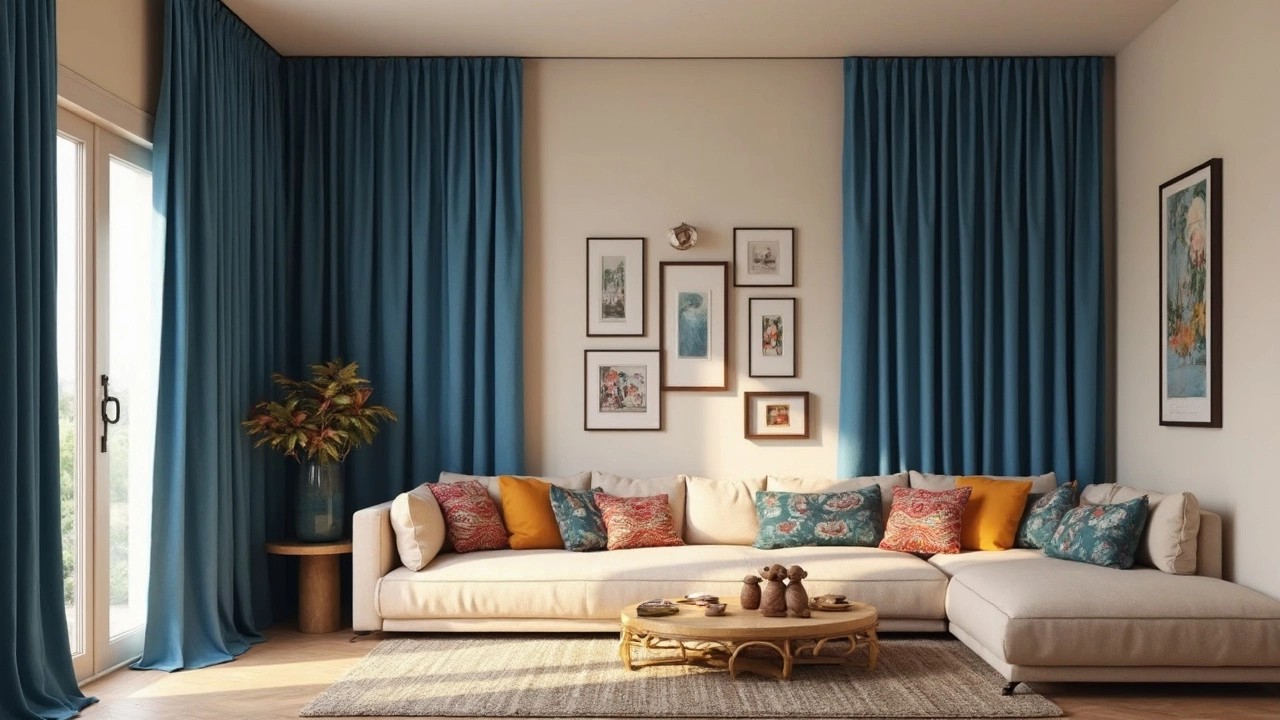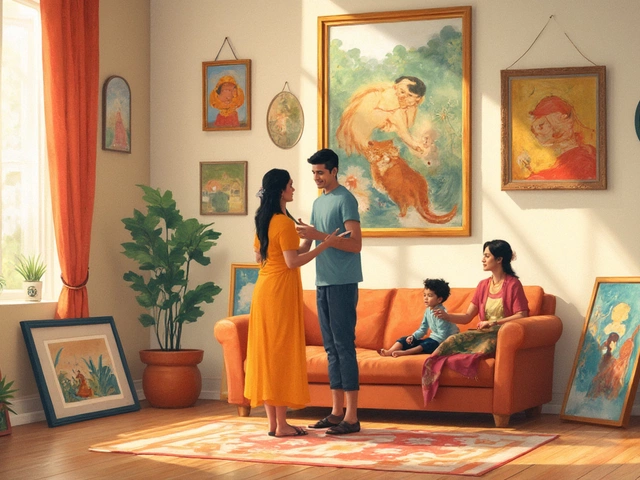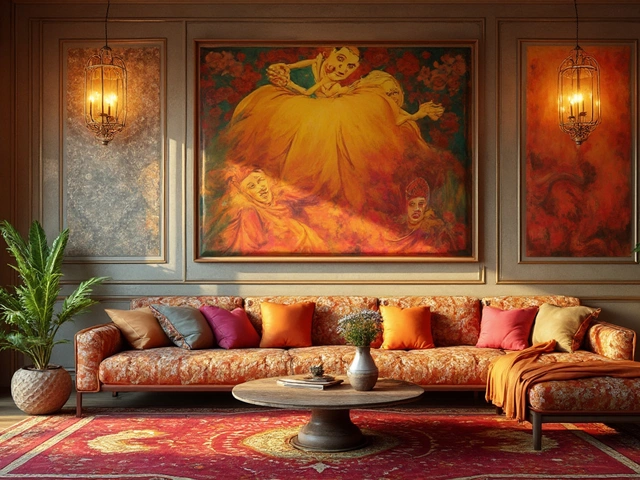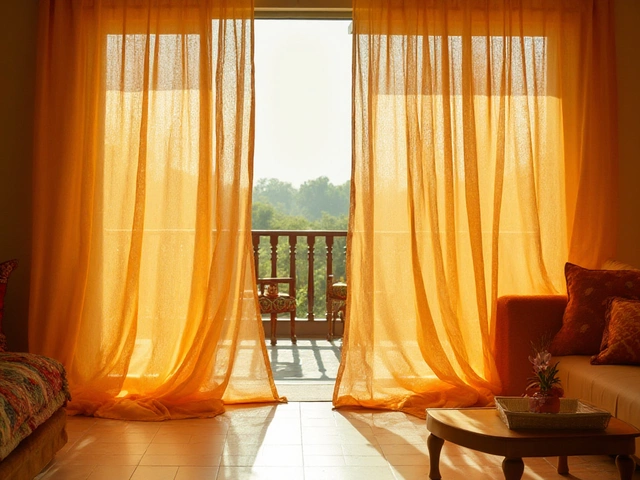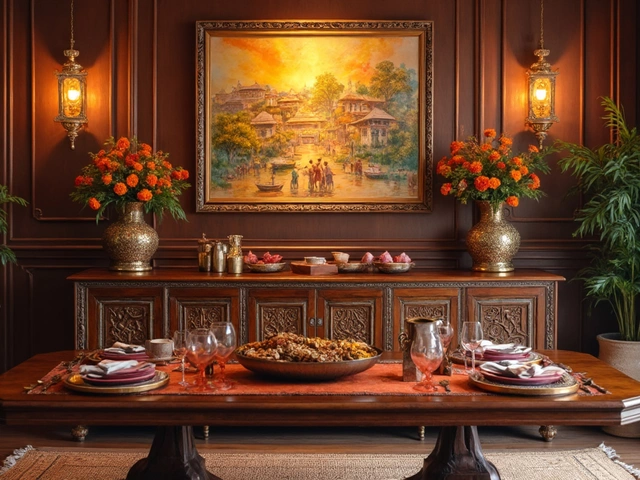Ever walked into a living room and thought, “Something feels off here,” but you couldn’t put your finger on it? Sometimes it’s not the artwork, that questionable rug, or the wild scatter of Lego from your kids. Often, it’s all about the curtain and couch color clash. People don’t realize how much curtains can boost – or drag down – the vibe of a whole room. If you’ve got a gorgeous navy sofa, should you pair it with inky drapes or let the light in with gauzy creams? If your couch leans beige, do you go bold up top or keep it neutral? Curtain choices are the silent make-or-break of a living space. So let’s get into what actually works—not just what Pinterest or showrooms would have you believe—and hack into the logic behind curtain and couch color matching.
How Curtain Color Impacts Room Atmosphere
That massive fabric swap you call a curtain does more than save you from nosy neighbors. The shade you pick sets the tone, literally changing the way you experience everything from family movie night to Sunday brunch. Curtain color can shift the light, affect the mood, and even play some wild tricks on your perception of space. Lighter curtains—think whites, beiges, or buttery creams—reflect natural sunlight, making a room feel airier and often larger. That’s physics: light colors bounce photons all over, so your space opens up.
Darker curtains—charcoal, navy, forest green—drink up light, sharpening contrasts with the lighter parts of your décor. Got kids who are tornadoes around the house, like my son Cormac? Dark fabric hides smudges and spills remarkably well (just trust me here). On the flip side, dark curtains can shrink a room visually. If you’re dealing with a shoebox apartment in the city, that’s not always what you want. But if you’ve got a huge open plan and things feel cavernous, that touch of drama never hurts. There’s a cool study out of a Sydney interiors consultancy from 2022 showing that rooms with light-colored curtains scored 36% higher for "freshness," while rooms with darker drapes scored 44% higher for "coziness." So, ask yourself: what’s the vibe you want when you flop onto that couch at the end of your workday?
And don’t ignore how curtain color interacts with your lighting. Light curtains glow in the sunshine and might look bland at night unless you use warm light bulbs. Dark curtains can become moody and elegant at dusk, perfect for winding down, but sometimes bleak on a cloudy morning. It’s all about balance!
Lighter Curtains: When to Choose Them
If your sofa is already rocking a deep, dramatic color or bold pattern, lighter curtains could be your golden ticket. They balance out that visual weight, creating a more open, balanced feel. Designers back this up: in homes where couches are navy, forest, or burgundy, especially on plush or heavy fabric, pale curtains downplay the heaviness. A trick I picked up while house-hunting around the Inner West—old bungalows with big, dark chesterfields just need that fresh curtain lift to avoid looking like a lost scene from a period drama.
Another perk: lighter curtains invite tons of natural light, perfect for small rooms or those without much sunlight. If you’re dealing with city-living or townhouses, this is a clutch move. Let’s put it into numbers. An Australian lighting survey from 2023 showed that rooms with white or cream curtains let in up to 43% more daylight compared to rooms with heavy brown or blue drapes. That means less strain on your electric bill during the day, too.
But don’t just throw up any pale panel. The material matters—a light fabric that’s sheer is great in the living room but might be too exposed for bedrooms or street-facing windows. Linen blends or thicker cottons help bridge that gap by offering privacy but still keeping things light and inviting.
There’s also the “monochrome-but-different-shade” trick. Pair a light taupe curtain with a coffee-colored couch, or a soft blush curtain with a muted dusty-rose sofa. It keeps everything looking intentional, not like you gave up halfway through decorating. If you’ve got active kids and you’re worried about sticky fingers and muddy paws (looking at you, Cormac), machine-washable curtains in off-white or greige can be life-savers. Don’t go snowy-white unless you’re into laundering fabrics more often than you empty the dishwasher.

Darker Curtains: When They Make Sense
Darker curtains can totally anchor a room, especially if your sofa floats toward the lighter end of the spectrum. If your couch is pale gray, white, beige, or anything pastel, rich-colored curtains inject contrast and a tailored feel. Maybe your living space feels echoey or you just want it to feel super cozy in winter. Heavy, dark curtains help with insulation—Sydney’s winter nights will make you appreciate that, trust me. A little-known fact: thermal-lined curtains (often deeper in color) reduce heat loss by up to 25%, according to the Australian Window Association.
Going dark is also a strategic way to add sophistication. Picture a tan couch with navy or emerald velvet curtains—instantly more grown-up. The drama works best when you’ve got ceilings you want to “bring down” for a snugger mood. And dark curtains are heroes for families with wild little ones, as they hide years of sticky handprints, Nerf gun wounds, and even the odd billboard of spaghetti sauce. I’ve lived it, and it’s true. Match your curtain rods in matte black or brushed brass for an extra punch.
Don’t go overboard, though. If both your couch and curtains are dark—and especially if your walls are, too—things start looking dense and heavy, almost theatrical. The trick is to break it up: use cushions, throws, or art in lighter shades, and add plenty of plants or metallic accents so the whole place doesn’t feel nocturnal. Spotlights or uplighters can help prevent that gloomy vibe when winter rolls in and daylight does a runner at 5 pm.
What about patterns? If your sofa’s a lighter neutral, try dark curtains with a subtle texture or small print. This not only adds interest but covers smudges better (a must if you have pets or rambunctious children). Plus, most dark curtains are available in blackout options—ideal if you binge-watch movies in the living room or your place doubles as a home cinema. If you’ve ever tried getting a toddler to nap during a bright Sydney afternoon, you’ll know the value of blackout fabric.
Data, Tips, and Real-Life Combos: Getting It Just Right
Let’s hit the pause button and actually look at what’s worked in homes, not just in catalogs. Here’s the real-life rundown: people often ignore curtain length, but floor-grazing panels nearly always look better—elegant, intentional, makes ceilings seem higher. If you do café-length or stop mid-window, it can look unfinished.
- Contrast for Boldness: If you want a statement, go for contrast—dark vs light, but keep the walls relatively neutral. For example, beige sofa + slate gray curtains = classic. Navy sofa + crisp white curtains = fresh.
- Monochromatic for Calm: Softer variations, like pale taupe couch with oatmeal curtains, keep things serene—no drama, just flow.
- Patterns as Bridging: Geometric or botanical curtain prints work as a bridge if your sofa and curtain colors are similar but you want some energy in the room.
- Don’t Forget the Rods: Metallic or color-matched rods level up the look and draw the eye up, especially with dark curtains.
If you’re nervous about picking a curtain color, test large samples in natural light at different times of day. What looks beige at 9 am can look dingy green at 4 pm—true story from my own living room last autumn. And measure generously—wider curtains can make your windows look twice as big.
| Sofa Color | Curtain Color | Effect | Best For |
|---|---|---|---|
| Dark Blue | Light Gray/White | Airy, fresh | Small or dark rooms |
| Pale Beige | Navy/Emerald | Bold, cozy | Open spaces, cool climates |
| Gray | Patterned (blue/green) | Layered interest | Neutral rooms needing color |
| Charcoal | Soft Taupe | Balanced modern | Minimalist style |
| Cream | Warm Terracotta | Inviting, earthy | Family lounges |
One last key: Trends change, but your home’s comfort should always win. Don’t get tied up in what social media or glossy home mags say. If your household loves light and openness, go lighter than the couch. Want drama, coziness, and a little mess-camouflage? Darker’s your friend. Samples, daylight testing, and gut instinct work way better than strict design rules. Remember: your couch and curtains are the quiet background music of your room—set the playlist that suits how you actually live. If my son’s snack explosions taught me anything, it’s that practicality nearly always ends up looking pretty smart anyway.
